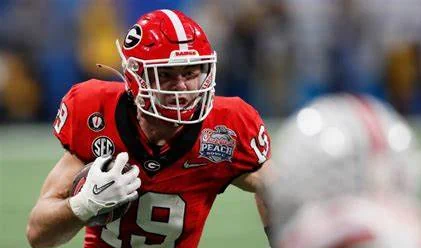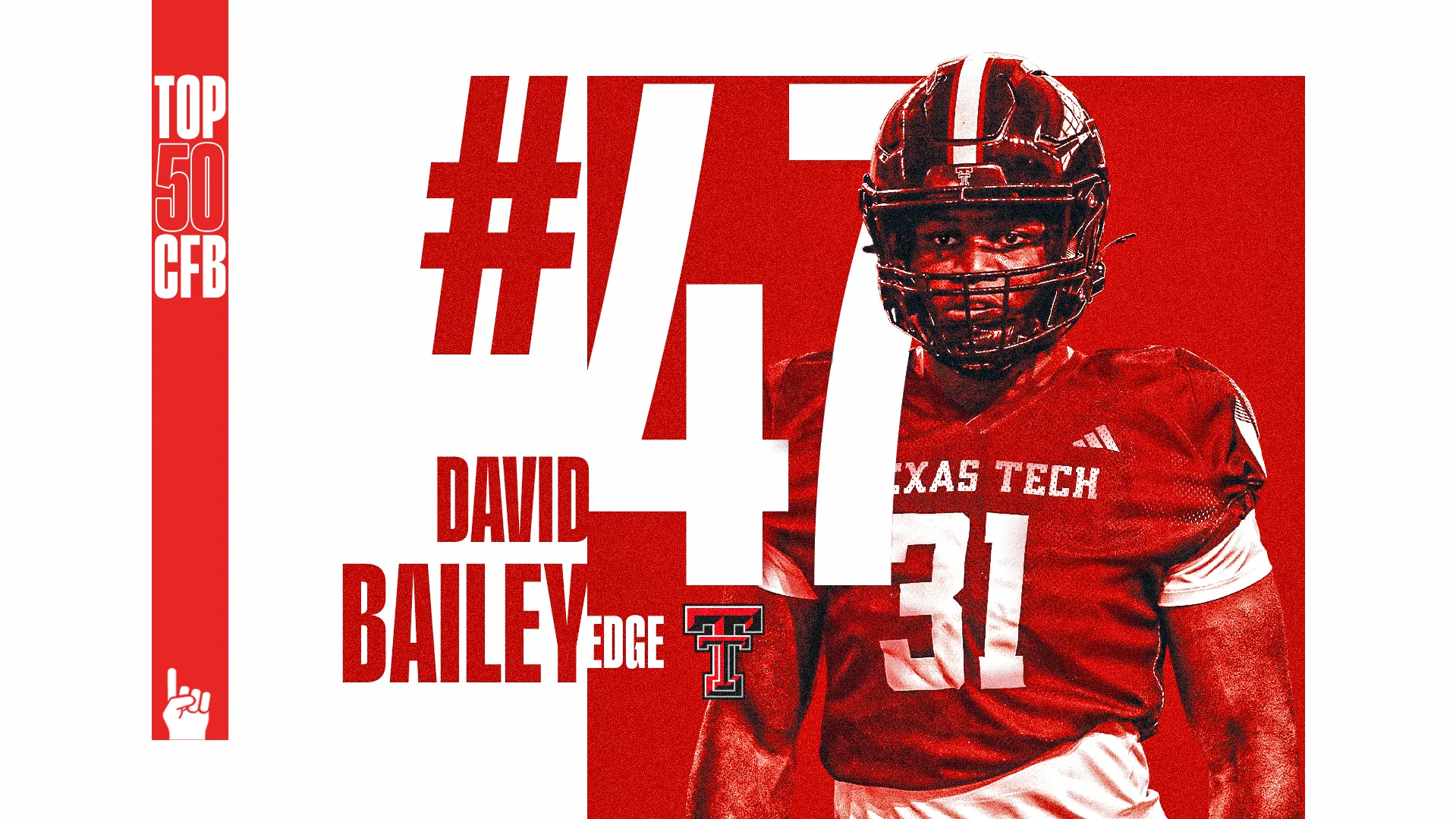Tight End Class
Early-round talent: DMid-round: C-
Late-round: C-
Overall grade: D+
Merging the 2023 and 2024 prospects
Brock BowersDalton Kincaid
Sam LaPorta
Michael Mayer
Luke Musgrave
Luke Schoonmaker
Ja’Tavion Sanders
Theo Johnson
Jaheim Bell
Cade Stover
Just to be clear, this article and series is all my opinion based off my own study and information I’ve gotten from general managers, directors of college scouting, national scouts, area scouts and NFL coaches. They all know way more than I do.
The 2023 NFL Draft was an incredible year for tight end prospects, earning an A grade from me. Last year’s selections proved their worth with some incredible rookie seasons, led by Detroit’s Sam LaPorta, who emerged as one of the best tight ends in the league. This year has one excellent prospect, but after that, the class does not compare well to last year.
If you were to merge the two classes, it would be an easy comparison as the 2023 group dominates. However, Brock Bowers would be the top overall prospect because he could go as top-10 pick this year, while of last year’s players were viewed as top-10 prospects. After Bowers, the 2024 group all are worse prospects than Kincaid, LaPorta, Mayer, Musgrave and Schoonmaker.
Safest Pick: Brock Bowers, Georgia 
Previous Picks:2023: Sam LaPorta
2022: Trey McBride
2021: Kyle Pitts
2020: Adam Trautman
2019: T.J. Hockenson
2018: Hayden Hurst
2017: O.J. Howard
2016: Hunter Henry
2015: Clive Walford
2014: Eric Ebron
2013: Zach Ertz
Bowers was the easy choice because he is a safe bet to be a very good starting tight end in the NFL – provided he can stay healthy. Bowers is a dynamic mismatch receiver who is a playmaker in the passing game. While he is undersized for in-line blocking, he puts forth a good effort and is not a throw away as a blocker. There is no doubt that Bowers has Pro Bowl potential for the NFL.
Biggest Bust Potential: Brevyn Spann-Ford, Minnesota 
Previous Picks:2023: Will Mallory
2022: Grant Calcaterra
2021: Hunter Long
2020: Hunter Bryant
2019: Noah Fant
2018: Jordan Akins
2017: Adam Shaheen
2016: Nick Vannett
2015: Nick O’Leary
2014: Jace Amaro
2013: Gavin Escobar
This was a tough call as no one really stood out to me. I think Spann-Ford might struggle to translate to the NFL because he could be limited in terms of speed and quickness to contribute as a receiver.
Tight End Rankings by Attributes
Pass Receiving:
NFL prototype: Travis Kelce, Chiefs
- Brock Bowers
- Ja’Tavion Sanders
- Jaheim Bell
- Theo Johnson
- Cade Stover
Recap: The NFL has evolved to the point where tight ends are a critical part of a potent passing attack. Some teams have better receiving weapons at tight end than they do at receiver. The league is driven by passing, so if a tight end can’t contribute as a receiver, he could have a hard time seeing the field. This draft class has some excellent receiving tight ends for the NFL.
Bowers is a phenomenal receiving tight end who is an extremely difficult player to cover. He is a very good route-runner who is skilled at finding the soft spot in zone coverage and presenting a big target for his quarterback. While Bowers does not have crazy speed or freak athleticism like a Kyle Pitts, Bowers is fantastic at winning contested catches, using his size to gain better position. With his leaping ability, Bowers high points balls naturally and is very dangerous on 50-50 passes. For a smaller-bodied tight end, Bowers has excellent ball adjustment skills, showing a natural ability to make difficult catches by contorting his frame. The question with many tight ends is speed, and Bowers definitely has it. He has a second gear in the open field and can run away from defenders. Bowers is a quick tight end who gets downfield, maintains his speed while cutting, and is smooth through the route. With his speed, athleticism and strength, Bowers is dangerous after the catch to rip off yards and turn routine catches into big plays.
As a receiver, Sanders can do a lot to help his offense. He is a quick route-runner with fluid athleticism to get open in the middle of the field. Sanders displays the speed to get down the seam and accelerate to find soft spots in zone coverage. Thanks to excellent body control and agility, Sanders makes difficult catches, routinely using his big body to box out defensive backs and make leaping grabs over them. Despite having to know that big hits are coming, Sanders shows no fear of safeties, bravely leaving his feet to make acrobatic aerial catches. He is a definite mismatch weapon who will be an asset to make receptions in the end zone over defensive backs.
Bell has the potential to be a mismatch receiving tight end thanks to his quickness, athleticism and feel. He is smooth as a route-runner, and linebackers can struggle to run with him. Bell tracks the ball well downfield and shows late hands to make the catch even when defenders are close. Given his quickness and athleticism, Bell is dangerous with the ball in his hands to rip off more yardage after the catch.
Stover flashed the ability to contribute as a receiver in 2023. He is a nice route-runner who can generate some late separation from man coverage. With his quality athleticism, Stover is a pretty smooth mover who can adjust to passes. He has upside to develop as a receiver.
Johnson has the speed and size to be a problem at tight end. He combines nice technique and solid route-running, not taking extra steps. Johnson presents a big target and can high point the ball. While he is not an elite receiving option, he has the ability to contribute as a receiver in the NFL.
Blocking:
NFL prototype: George Kittle, 49ers
- Theo Johnson
- Ja’Tavion Sanders
- Brock Bowers
- Cade Stover
- Jaheim Bell
Recap: Blocking ability is still important for NFL tight ends; not just in the ground game, but in pass protection. Teams like their tight ends to have the ability to help tackles when they’re going against an elite edge-rusher and contribute to helping cover up tacklers in the rushing attack. In this group, there isn’t one player who is an elite blocker, but none of them is awful.
Johnson has good size and strength to be a blocker. His technique needs improvement, but he has potential. Sanders and Bowers face limitations as blockers, but both still put forth effort. Stover needs to show more willingness and attitude as a blocker. Bell is too undersized to be an effective blocker at the pro level.
Red Zone:
NFL prototype: Sam LaPorta, Lions
- Brock Bowers
- Ja’Tavion Sanders
- Theo Johnson
- Jaheim Bell
- Cade Stover
Recap: Tight ends are critical players in the red zone. Multiple tight ends are needed for goal-line packages. Many teams also like to use double-tight end sets inside the 20-yard line. A tight end who is a big target with sure hands and leaping ability is a good weapon to help produce touchdowns instead of field goals. Also being an effective blocker is very helpful in the condensed field, in short-yardage situations, and near the goal line. Tight ends who are terrible blockers aren’t options for goal-line packages.
Bowers is the best red-zone weapon in this group because of his receiving talent, his route-running to get open, his size to make contested catches, his run-after-the-catch ability, and because he is capable of splitting out and beating man coverage.
Sanders is a potential red-zone weapon with his ability to beat coverage. Johnson could be a red-zone contributor given his size as a receiver and blocker. Bell made some plays in the red zone last year showing versatility, but he has limitations as a blocker that could get him pulled in goal line. Stover could rotate into the game in red-zone packages, but his blocking needs to get better.
Hands:
NFL prototype: George Kittle, 49ers
- Brock Bowers
- Ja’Tavion Sanders
- Jaheim Bell
- Theo Johnson
- Cade Stover
Recap: Tight ends with bad hands don’t get thrown the ball often in the NFL. They have a hard time seeing the field and end up only playing in goal-line situations and on special teams. In the group above, there wasn’t one player who stood out as having bad hands.
Bowers has the best hands of this group and is natural receiver. Sanders has really soft hands and is an easy hands catcher. Bell has reliable hands as well. Johnson and Stover are solid in this regard as well.
H-Back:
NFL prototype: Mark Andrews, Ravens
- Brock Bowers
- Jaheim Bell
- Ja’Tavion Sanders
- Theo Johnson
- Cade Stover
Recap: Many offensive coordinators like tight ends with the flexibility to line up as an h-back. That allows the coaching staff to set up more mismatches and align blocking schemes differently. Not all tight ends have the athletic ability and quickness to pull off h-back responsibilities.
Bowers projects as the best h-back tight end of this group, but it is close with Bell. Bell moved around at Florida State and was a dangerous runner near the goal line. Sanders has enough athleticism to contribute as an h-back. Playing h-back is not a fit for Johnson or Stover.
Yards After the Catch:
NFL prototype: Travis Kelce, Chiefs
- Brock Bowers
- Ja’Tavion Sanders
- Jaheim Bell
- Theo Johnson
- Cade Stover
Recap: There are some tight ends in the NFL who are very dangerous with the ball in their hands. Having the ability to pick up yards after the catch – YAC – is not an easy trait to find in tight ends. This class has some quality yards-after-the-catch tight ends, and none of the five is bad at it.
With his speed, athleticism and strength, Bowers is dangerous after the catch to rip off yards and turn routine catches into big plays. Sanders flashes some run-after-the-catch ability, and he made some big plays for Texas over the past couple of years. Bell had some nice runs after the catch in his career and could translate that to the NFL. Johnson and Stover have some ability to pick up yards after the catch as well.
NFL Picks - Jan. 5
NFL Power Rankings - Jan. 5
2026 NFL Mock Draft - Dec. 31
Fantasy Football Rankings - Sept. 1





